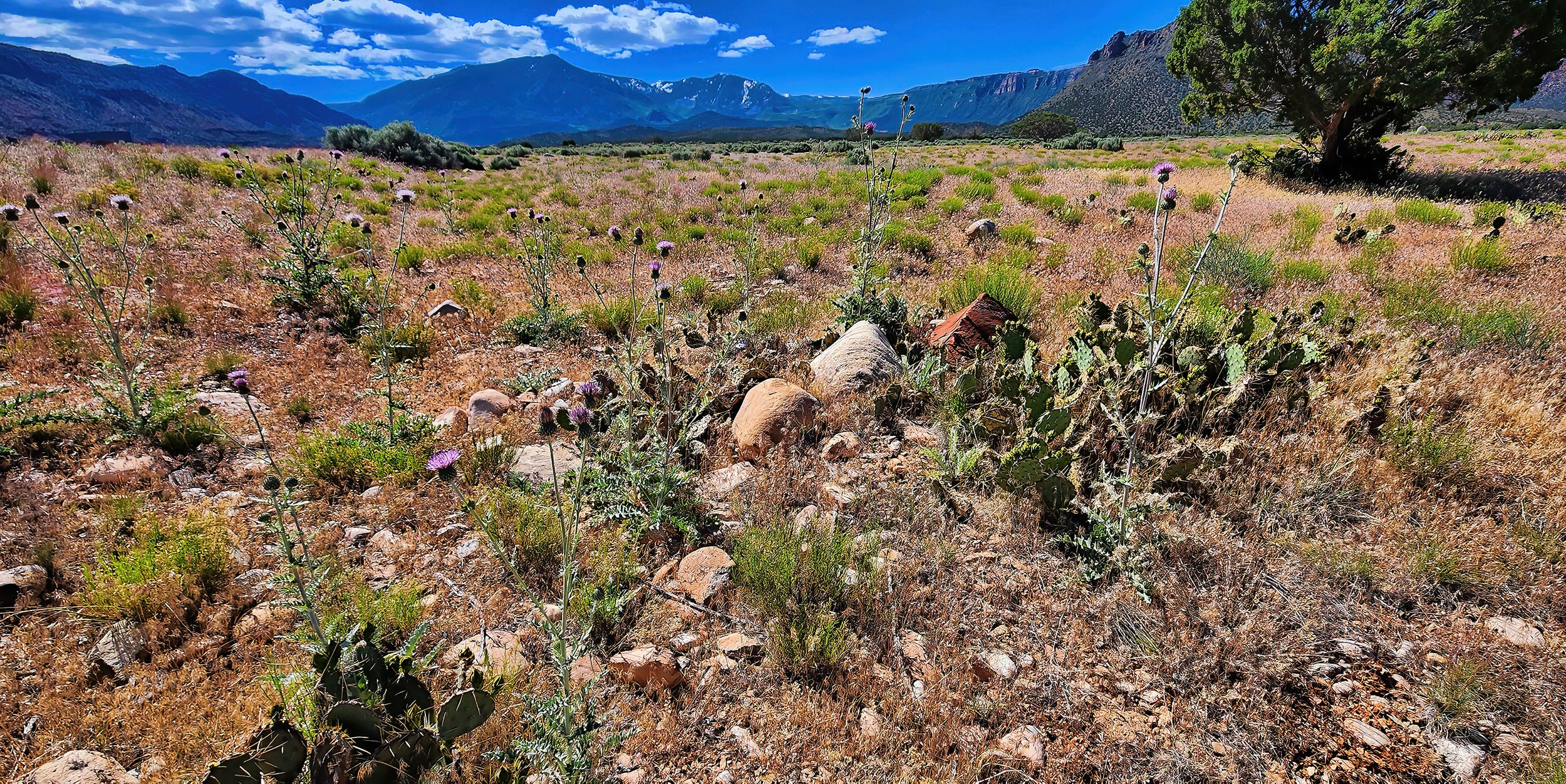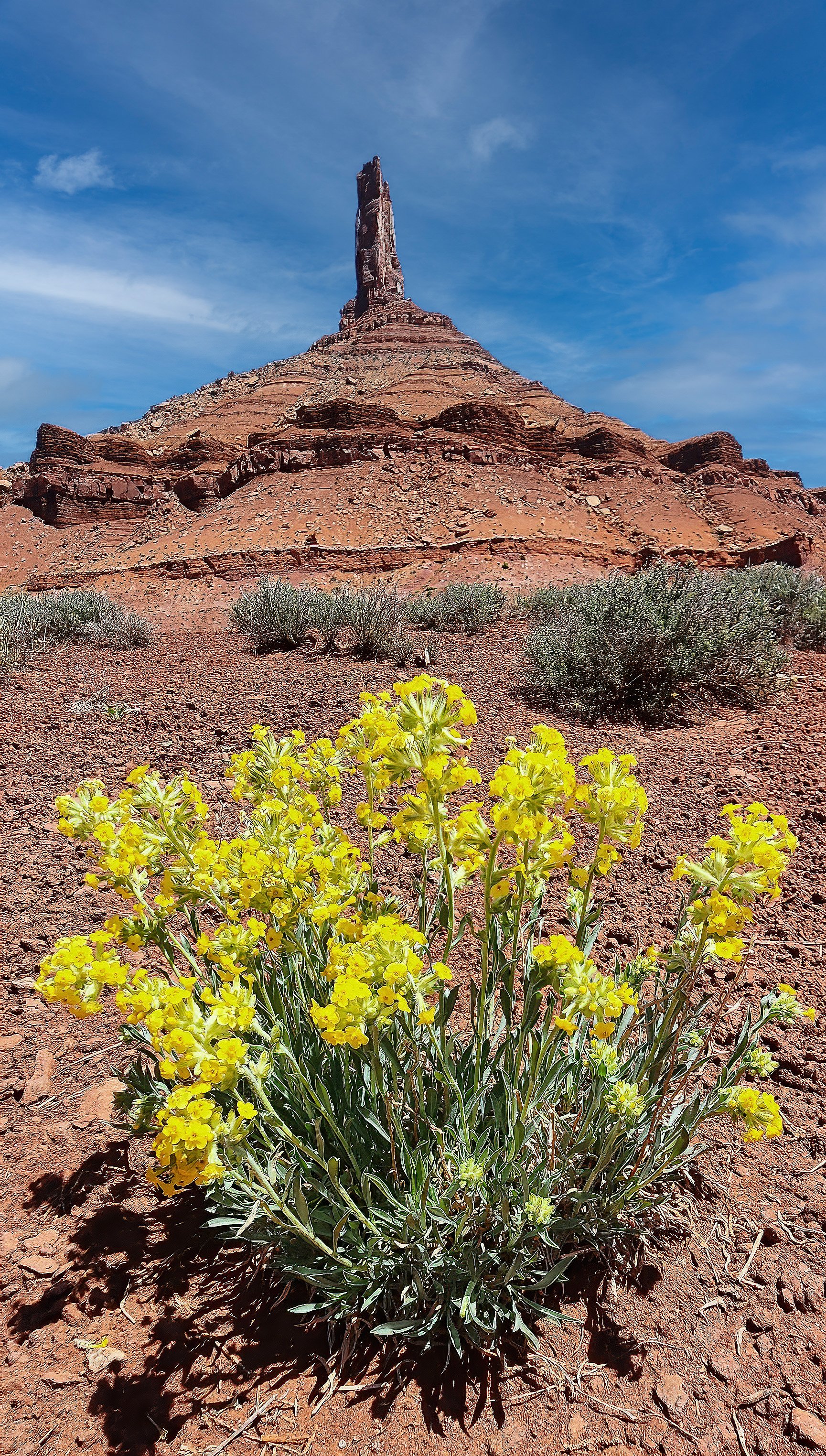by the engineering globe mallow bee (Diadasia diminuta) that collects pollen from the globemallow flower that is presently at peak bloom in Castle Valley. It’s quite fascinating to watch their activities, if one has the time and patience.
Vertical tubular “turrets” serve as entrances to the underground hive. The tallest seen here on the right is 1.25 inches (3.2 cm) high.
The inside diameter of the turrets is about 4 mm, but it appears that the subterranean part of the entrance to the hive is slightly larger in size.
Early stages of turret construction after the initial burrow entrance has been excavated. The bees gather finer-grained particles from the ejected material from their diggings and cement the turret with their saliva.
Bee applying saliva to the upper rim of the turret to cement small particles as the turret rises.
Part of the neighborhood still under construction. Note the freshly dug shallow burrow at the far left without a turret.
Fully loaded pollen bags on the hind legs of the globe mallow bee returning to a fully completed part of the hive.
Down the hatch with a heavy load.
Wide view of a portion of the hive.















































